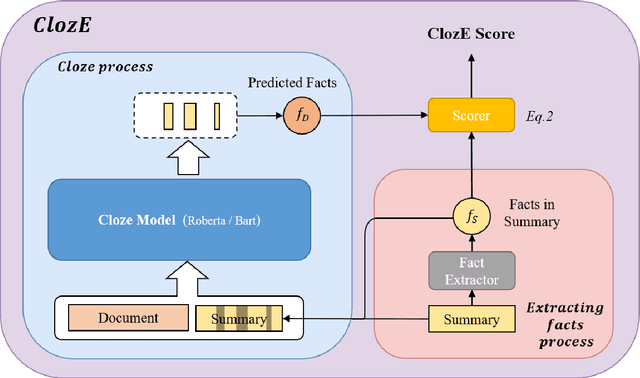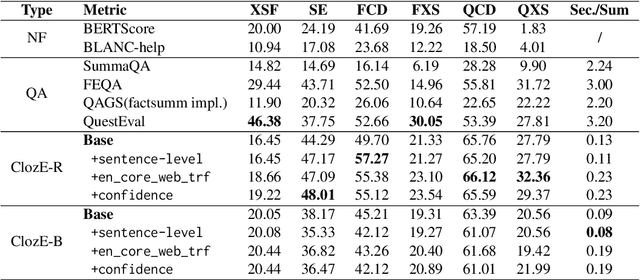Dingxin Hu
Improving Factual Error Correction for Abstractive Summarization via Data Distillation and Conditional-generation Cloze
Feb 13, 2024Abstract:Improving factual consistency in abstractive summarization has been a focus of current research. One promising approach is the post-editing method. However, previous works have yet to make sufficient use of factual factors in summaries and suffers from the negative effect of the training datasets. In this paper, we first propose a novel factual error correction model FactCloze based on a conditional-generation cloze task. FactCloze can construct the causality among factual factors while being able to determine whether the blank can be answered or not. Then, we propose a data distillation method to generate a more faithful summarization dataset SummDSC via multiple-dimensional evaluation. We experimentally validate the effectiveness of our approach, which leads to an improvement in multiple factual consistency metrics compared to baselines.
Just ClozE! A Fast and Simple Method for Evaluating the Factual Consistency in Abstractive Summarization
Oct 06, 2022



Abstract:The issue of factual consistency in abstractive summarization has attracted much attention in recent years, and the evaluation of factual consistency between summary and document has become an important and urgent task. Most of the current evaluation metrics are adopted from the question answering (QA). However, the application of QA-based metrics is extremely time-consuming in practice, causing the iteration cycle of abstractive summarization research to be severely prolonged. In this paper, we propose a new method called ClozE to evaluate factual consistency by cloze model, instantiated based on masked language model(MLM), with strong interpretability and substantially higher speed. We demonstrate that ClozE can reduce the evaluation time by nearly 96$\%$ relative to QA-based metrics while retaining their interpretability and performance through experiments on six human-annotated datasets and a meta-evaluation benchmark GO FIGURE \citep{gabriel2020go}. We also implement experiments to further demonstrate more characteristics of ClozE in terms of performance and speed. In addition, we conduct an experimental analysis of the limitations of ClozE, which suggests future research directions. The code and models for ClozE will be released upon the paper acceptance.
 Add to Chrome
Add to Chrome Add to Firefox
Add to Firefox Add to Edge
Add to Edge